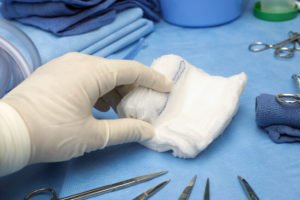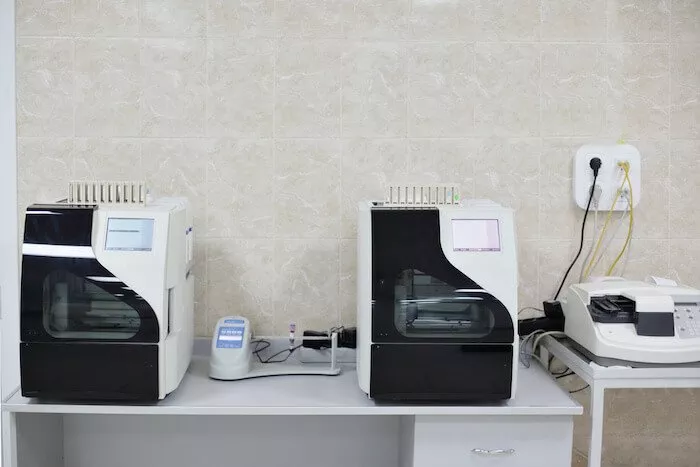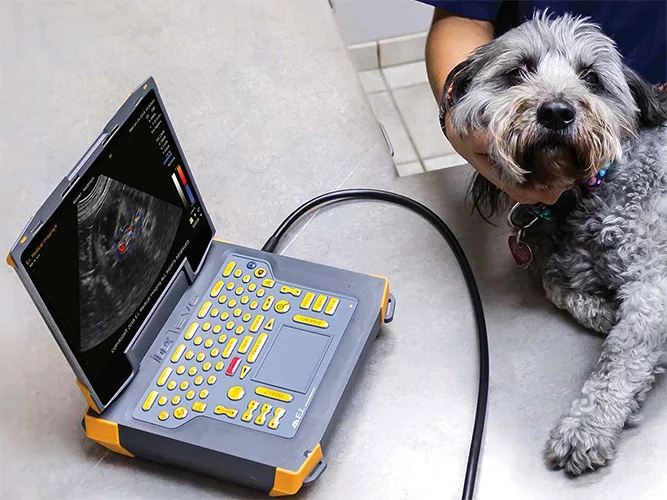 The operating room is a busy place. At any given moment there are 6-8 talented professionals, each with their own area of expertise, working to save a patient’s life. The operation often requires the use of expensive medical devices to perform specific tasks. The bulk of the medical devices used are simple sponge/gauze-pad/towels, which are easy to lose track of as the team works quickly, knowing every additional minute under anesthesia is a risk.
The operating room is a busy place. At any given moment there are 6-8 talented professionals, each with their own area of expertise, working to save a patient’s life. The operation often requires the use of expensive medical devices to perform specific tasks. The bulk of the medical devices used are simple sponge/gauze-pad/towels, which are easy to lose track of as the team works quickly, knowing every additional minute under anesthesia is a risk.
Trays are loaded with scalpels, clamps, sponges, forceps, and retractors, and they all must be accounted for at the end of the procedure to ensure that none have been inadvertently left inside the patient. Miscounting the devices, which happens 20% of the time, has proven to be the major cause of Retained Surgical Items (RSI). Of these simple operating room (OR) instruments, the sponge/gauze-pad/towel is often the hardest to find because it absorbs the colors of the fluids it soaks up thereby disappearing into the body cavity. Leaving a sponge in a patient significantly increases the risk of post-procedure infection.
Using RFID Tags to Track Medical Sponges
 A major medical company asked us to augment their development team in the design, test, and manufacture of a healthcare system to help account for the sponges used in a medical procedure. The sponges incorporate a small embedded RFID capsule as which can be tracked using a hand-held scanner. The product hardware existed, but our client needed a team of software developers to architect the software, write the code, and test the software under the direction of the medical company and within the guidelines of the appropriate FDA regulations.
A major medical company asked us to augment their development team in the design, test, and manufacture of a healthcare system to help account for the sponges used in a medical procedure. The sponges incorporate a small embedded RFID capsule as which can be tracked using a hand-held scanner. The product hardware existed, but our client needed a team of software developers to architect the software, write the code, and test the software under the direction of the medical company and within the guidelines of the appropriate FDA regulations.
With a 20% miscount rate leading to retained surgical items — a nightmare for healthcare providers — our innovative sponge tracking system significantly reduces the risk of surgical complications and cuts postoperative time by up to 15 minutes, enhancing patient recovery.
The system consists of:
- a body scanner mat underneath the patient,
- a wand for scanning the room,
- a wand for scanning extremities,
- the console for workflow instructions and results reporting, and
- the proprietary RF-tagged sponges, gauze-pads, and towels.
We joined the team and re-architected the device software so it could meet the requirements for a robust, accurate, easy-to-use device. The new architecture includes a unique messaging approach that significantly simplified the communications and reduced the amount of verification and validation testing that was required. The original Python scripts provided with the prototype hardware were replaced with state-of-the-art software in C++. In addition to the operational software, a key challenge for software was dealing with the RF interference often found in the OR. False positive detections had to be reduced to maintain the high level of accuracy required by the application.
Medical Device Development In Accordance With Client’s QMS & SOP
The software was developed under the medical company’s design controls in accordance with their Quality Management System (QMS) and Standard Operating Procedures (SOP).
- In-depth code reviews and project audits were held,
- required documentation was written,
- FMEA-based risk analysis was performed throughout the design process to identify and mitigate risks, and
- extensive verification and validation activities were completed.
The product development process conformed to the appropriate standards, including: 13485, 62304, 14971, etc.
Manufacturing and Testing Support for Med Device Engineering
As the product matured, we were asked to provide significant support for manufacturing and reliability testing. We designed and deployed a complete test station and the software to run it. The test station subjected the sponge detection system to various forms of RF interference while measuring the ability of the device to correctly detect the presence of a RFID-tagged sponge. The test station was automated to run extended tests for weeks at a time. As a result of our approach to testing, our client now guarantees the accuracy of the device.
The device is a success in the marketplace with proven results in eliminating lost sponges, gauze-pads, and towels. This scanning device reduces the post-operative time in the OR by as much as 15 minutes on average, improving patient recovery and lowering OR costs. The scanning wands are disposable providing a source of income per procedure, and the RF-tagged sponges/gauze-pads/towels must be compatible with the system thus providing another source of recurring income. The sponge detector is a win for our client and a win for the patient.
Are you looking for an expert medical device development partner? Contact Cardinal Peak to discuss your project and get accurate estimates for budget and timeline.
Check out our related blog post on the role of near-field communication (NFC) in counterfeit protection.



